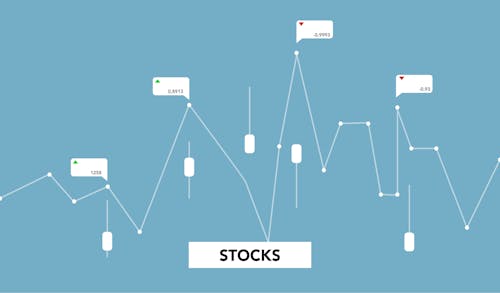
 Image Source: Pexels
Image Source: Pexels
Asian stocks advanced, especially Chinese firms, following comments by U.S. President Trump suggesting a more lenient approach towards tariffs on China. This shift in tone led to positive movements in Chinese shares in Hong Kong, a weakening dollar, and a strengthening yuan. Trump’s remarks during a Fox News interview, mentioning his preference to avoid imposing tariffs on China, buoyed investor sentiment. Chinese shares rose, with the Australian dollar also gaining by 0.5%. Despite these developments, markets remain cautious in interpreting Trump’s statements too optimistically. Earlier, Trump addressed business leaders at the World Economic Forum in Davos, Switzerland, on Thursday, expressing his desire to reduce global oil prices, interest rates, and taxes. His remarks regarding lower interest rates influenced U.S. markets, leading the S&P 500 to reach a record high, although investors stayed wary about the president’s forthcoming actions on trade and tariffs.The Bank of Japan implemented an interest rate hike for the first time since July. This decision led to two- and five-year government bond yields in Japan reaching their highest levels since 2008. Concurrently, 10-year JGB futures saw a decline. The Bank of Japan’s indication of expected’significantly negative’ real rates to propel economic activity supports a dovish stance; the expressed commitment to further rate hikes hints at a more hawkish outlook. A revised upward inflation forecast, notably for fiscal 2025 with a projected headline rate of 2.4%, up from 1.9%, alongside acknowledged upside risks, further underscores the mixed sentiments. The market response, with USDJPY dipping to 155.01 from above 156 pre-announcement, suggests a leaning towards a more hawkish sentiment, yet attention remains on Ueda’s pending press conference for additional clarity. In the UK, the GfK Consumer Confidence Index taking a five-point dip to -22 signifies a continuation of uninspiring survey results. This divergence in confidence levels from recent real disposable income growth, coupled with a nine-point hike in savings intentions, implies potential obstacles for immediate consumer spending growth. Recent market volatility has largely centred on rising bond yields, which pressure the UK government’s fiscal margins. However, bond yields are not the sole determinant of the UK’s economic fate. The OBR’s forecasts for market interest rates appear conservative, but their GDP projections seem overly optimistic given the current weak economic momentum. While daily fluctuations in the Gilt market attract attention, the implications of GDP growth are more significant. Using the IMF’s debt sustainability model with the OBR’s assumptions reveals an immediate deterioration in the debt trajectory (~4% of GDP). If more realistic growth rates of ~1% per annum are used instead of the OBR’s ~1.7%, the gap widens. Additionally, lower growth complicates achieving a primary budget surplus, a goal the UK has not met since 2001, making the fiscal plan seem overly optimistic. In terms of today’s macro slate, the key highlights include the release of Flash January PMIs,, the US University of Michigan survey, data on existing home sales in the US, and Christine Lagarde, who speaks at Davos.
Overnight Newswire Updates of Note
(Sourced from reliable financial news outlets)
FX Options Expiries For 10am New York Cut (1BLN+ represents larger expiries, more magnetic when trading within daily ATR)
CFTC Data As Of 17/1/25This summary provides an overview of the trading positions held by equity fund managers and speculators in various futures markets as of the reporting period ending January 14:
S&P 500 Futures:
-
Equity fund managers reduced their net long positions by 70,424 contracts, leaving them with a total of 923,997 contracts. A “net long position” means they hold more contracts betting on a rise in the S&P 500 index compared to those betting on a decline.
-
Equity fund speculators reduced their net short positions by 38,472 contracts, bringing the total net short position down to 311,085 contracts. A net short position indicates that these speculators are betting on a decline in equity prices. The reduction in their positions suggests a lessened bearish outlook compared to previous levels.
Currency Positions:
-
Japanese Yen: Speculators have a net short position of 29,411 contracts, meaning they expect the Yen to weaken.
-
Euro: Net short position of 60,397 contracts, indicating expectations of a weakening Euro.
-
British Pound: A net long position of 438 contracts suggests a minor expectation for the Pound to strengthen.
-
Swiss Franc: A net short position of 38,701 contracts implies expectations of a weaker Franc.
-
Bitcoin: A net long position of 1,335 contracts shows a favorable outlook on Bitcoin’s price increasing.
CBOT US Treasury Futures:
-
Ultrabond: The net short position decreased by 4,966 contracts to 242,422, suggesting some reduction in bearish bets.
-
2-year Treasury: Increased net short position by 64,188 contracts to 1,257,206, indicating a stronger expectation for rising yields (or falling prices).
-
10-year Treasury: Net short position trimmed by 104,511 contracts to 567,935, showing reduced bearish sentiment.
-
5-year Treasury: Decreased net short position by 23,282 contracts to 1,777,621, also indicating less bearishness.
-
Treasury Bonds: Shifted from a net short position of 16,827 contracts to a net long position of 52, indicating a switch to an expectation of rising bond prices (or falling yields).
Technical & Trade ViewsSP500 Pivot 6040
 EURUSD Pivot 1.0435
EURUSD Pivot 1.0435
 GBPUSD Pivot 1.2614
GBPUSD Pivot 1.2614
 USDJPY Pivot 153.77
USDJPY Pivot 153.77
 XAUUSD Pivot 2692
XAUUSD Pivot 2692
 BTCUSD Pivot 101,960
BTCUSD Pivot 101,960
 More By This Author:FTSE Flip From Red To Green As Bullish Momentum Marches On
More By This Author:FTSE Flip From Red To Green As Bullish Momentum Marches On
FTSE Prints Record Highs Before Pulling Back To Close Red On The Day
Daily Market Outlook – Wednesday, Jan. 22















